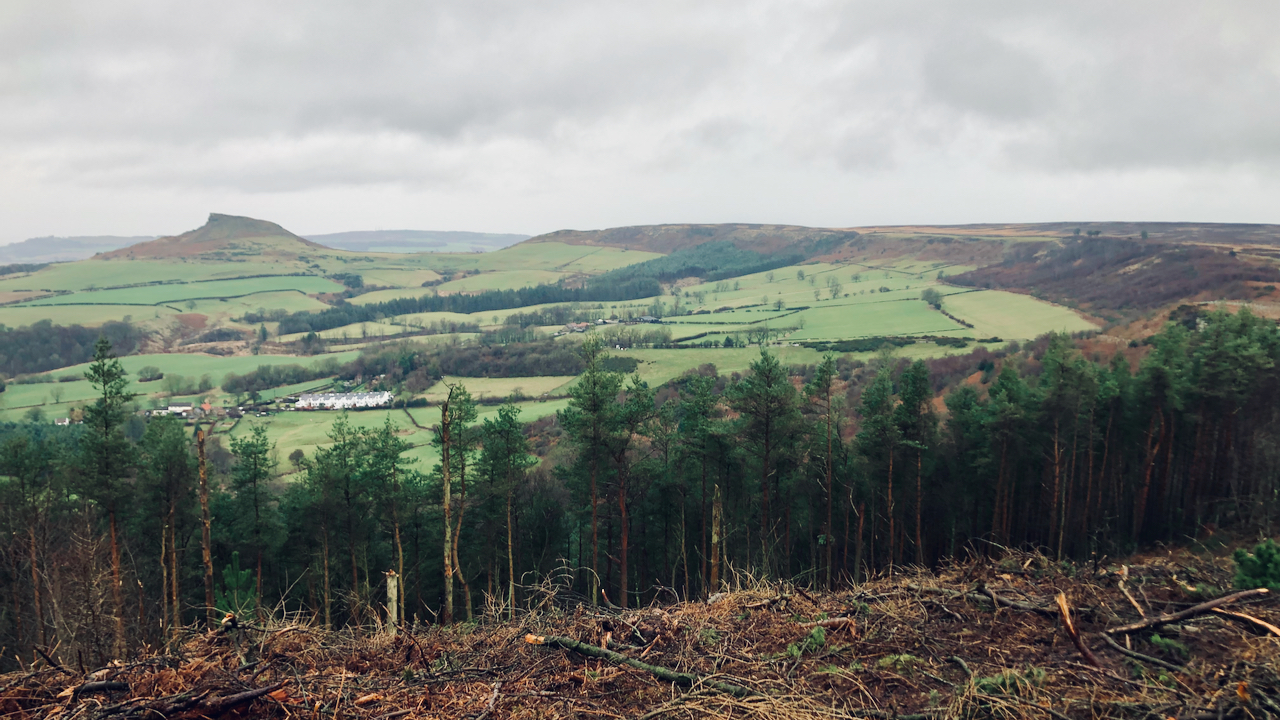This is on Little Ayton Moor, above Hunter’s Scar — note to self: have a look at this feature — revealing a view of the whole of the short valley between Roseberry Topping, Black Bank and Great Ayton Moor. A view that has not been seen for perhaps half a century.
To me, a view such as this, even on a wet and windy day, inspires an imagaination of the limit of the glacier which flowed down the Tees valley from the Pennines until meeting the bigger ice-sheet from Scandinavia, travelling south and west. in the North Sea. The Pennine glacier was spilt, part diverted round the Eston escarpment, filling up the Guisborough valley, and travelling along the north-west and south faces of Roseberry.
Our little dale was was partially filled up by the glacier probably damming up a sheet of water until it overflowed through the nick at Gribdale Gate into Lonsdale. Gribdale Gate is practically in the line with the Cleveland Dyke, an intrusion of hard volcanic rock which may have resisted further erosion by this overflow channel1Elgee, Frank (1912). The Moorlands of North-Eastern Yorkshire: their natural history and origin. Page 238 London: A Brown & Sons. OCLC 776748510..
When the cottages of Gribdale Terrace were being built, a bore-hole was drilled to provide a water supply. Apparently the well hit “a thick deposit of vegetable matter and clay having a very putrid and offensive smell” resulting in an unusable supply — suggestive of a former body of water. The well was abandoned and an alternative supply had to be obtained from higher up Ayton Bank, a supply which is still in use today2BURTON, J.J. ‘ROSEBERRY TOPPING IN FACT AND FICTION.’ Page 18. CLEVELAND NATURALISTS’ FIELD CLUB. RECORD OF PROCEEDINGS 1920 – 1925. VOL.III. Part IV. [Available online at http://barlow.me.uk/clevelandnats/1920-1925_.pdf — accessed 15 July 2022.
- 1Elgee, Frank (1912). The Moorlands of North-Eastern Yorkshire: their natural history and origin. Page 238 London: A Brown & Sons. OCLC 776748510.
- 2BURTON, J.J. ‘ROSEBERRY TOPPING IN FACT AND FICTION.’ Page 18. CLEVELAND NATURALISTS’ FIELD CLUB. RECORD OF PROCEEDINGS 1920 – 1925. VOL.III. Part IV. [Available online at http://barlow.me.uk/clevelandnats/1920-1925_.pdf — accessed 15 July 2022

Leave a Reply